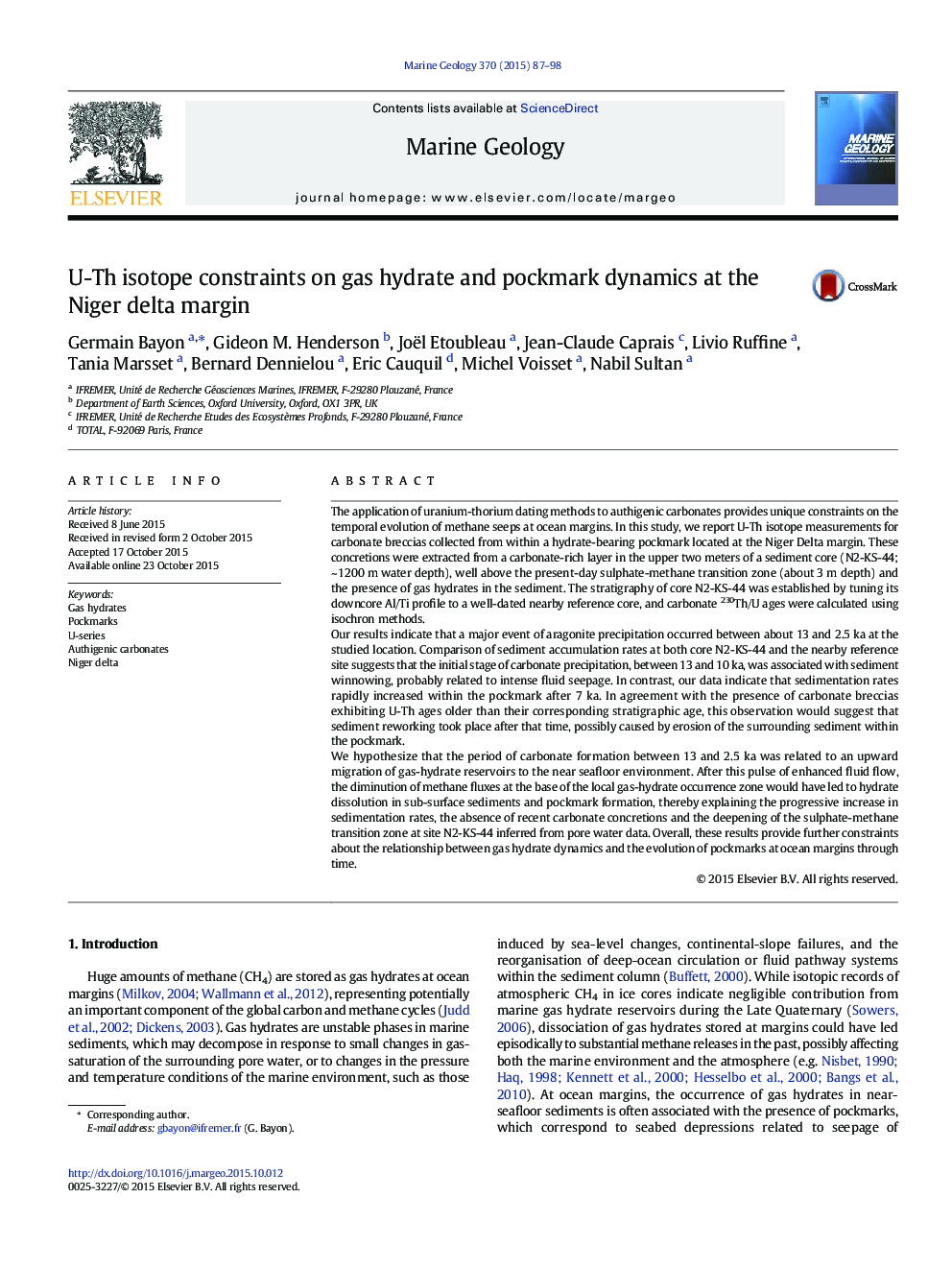| Article ID | Journal | Published Year | Pages | File Type |
|---|---|---|---|---|
| 6441445 | Marine Geology | 2015 | 12 Pages |
Abstract
We hypothesize that the period of carbonate formation between 13 and 2.5Â ka was related to an upward migration of gas-hydrate reservoirs to the near seafloor environment. After this pulse of enhanced fluid flow, the diminution of methane fluxes at the base of the local gas-hydrate occurrence zone would have led to hydrate dissolution in sub-surface sediments and pockmark formation, thereby explaining the progressive increase in sedimentation rates, the absence of recent carbonate concretions and the deepening of the sulphate-methane transition zone at site N2-KS-44 inferred from pore water data. Overall, these results provide further constraints about the relationship between gas hydrate dynamics and the evolution of pockmarks at ocean margins through time.
Related Topics
Physical Sciences and Engineering
Earth and Planetary Sciences
Geochemistry and Petrology
Authors
Germain Bayon, Gideon M. Henderson, Joël Etoubleau, Jean-Claude Caprais, Livio Ruffine, Tania Marsset, Bernard Dennielou, Eric Cauquil, Michel Voisset, Nabil Sultan,
